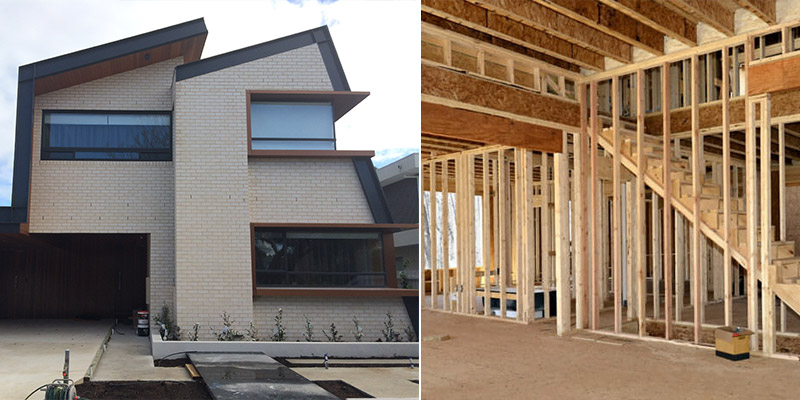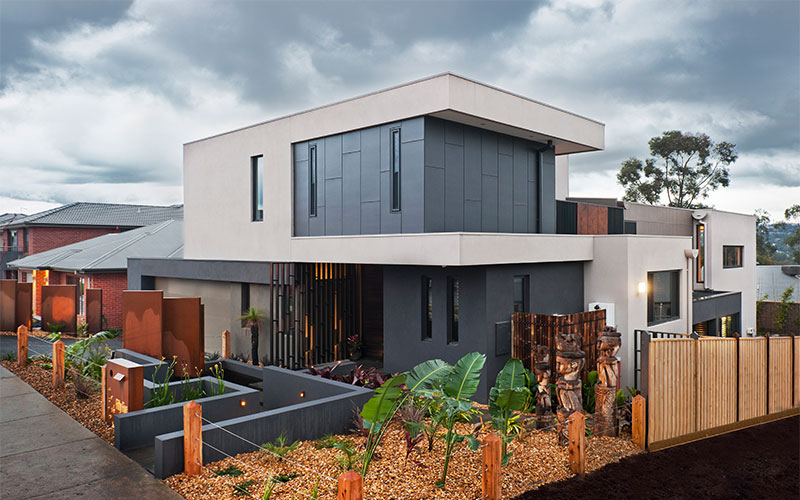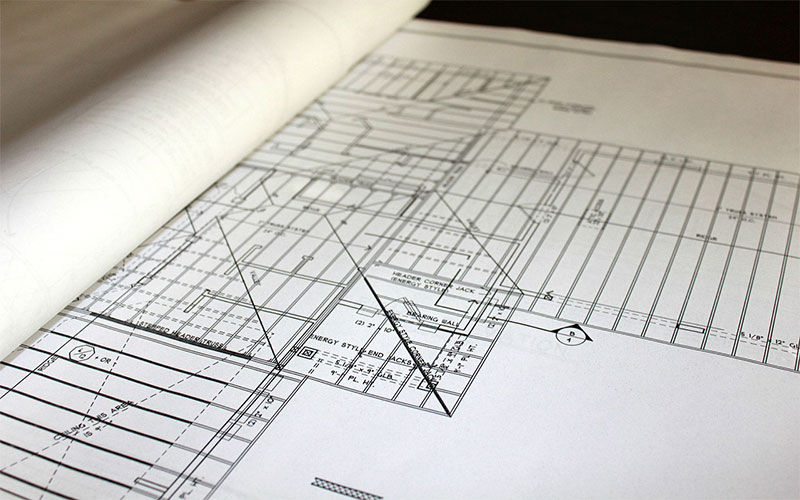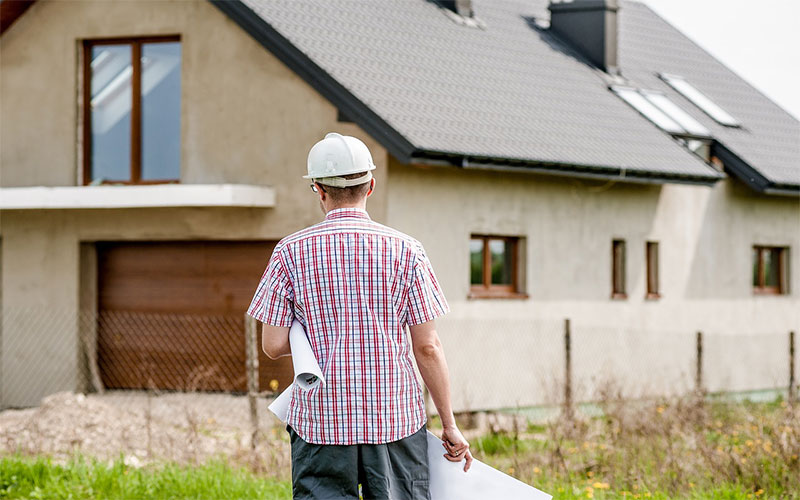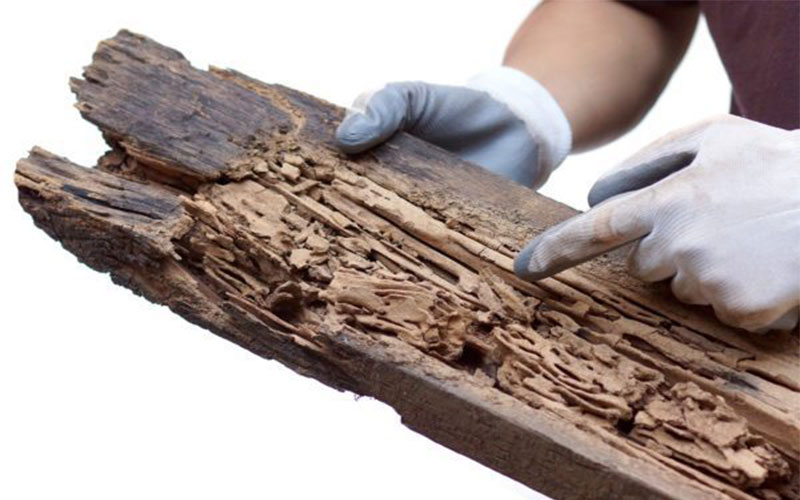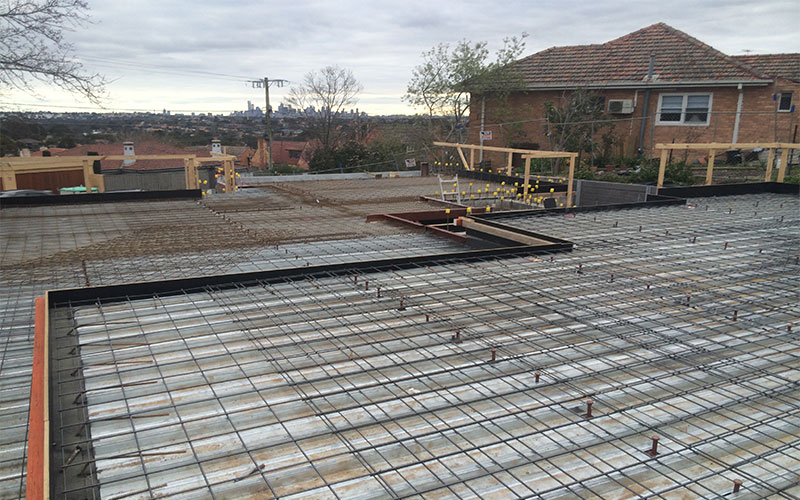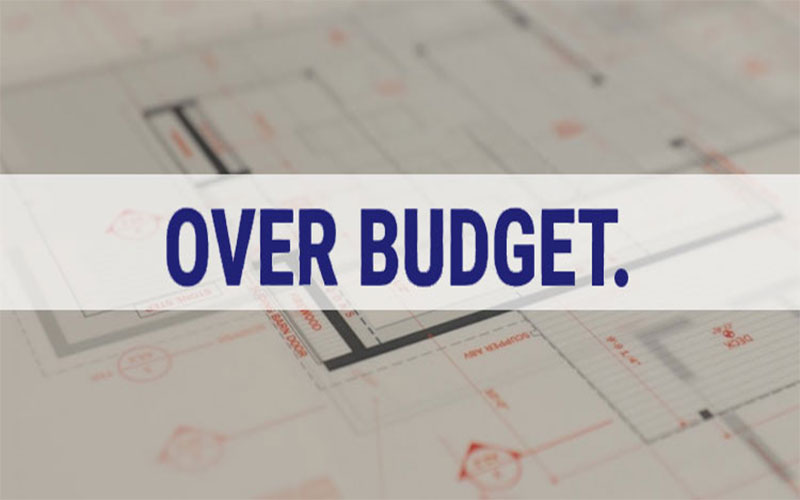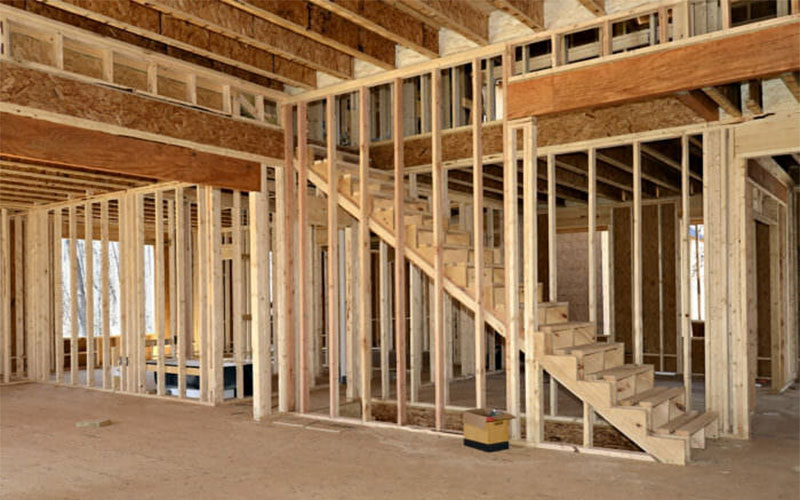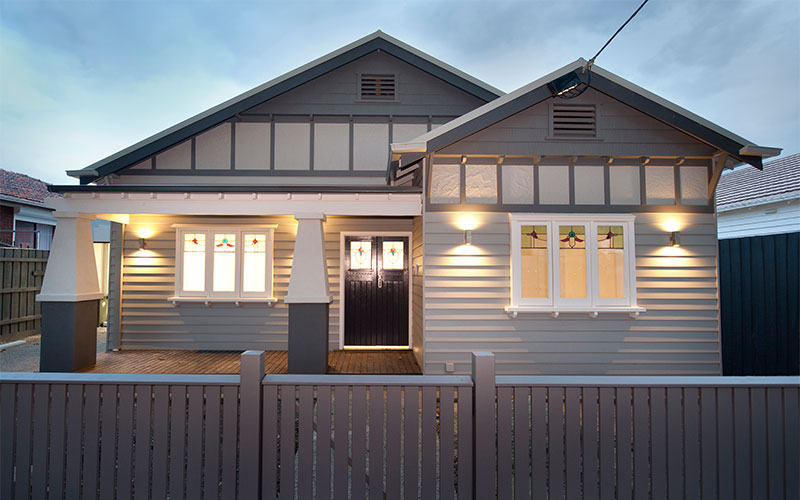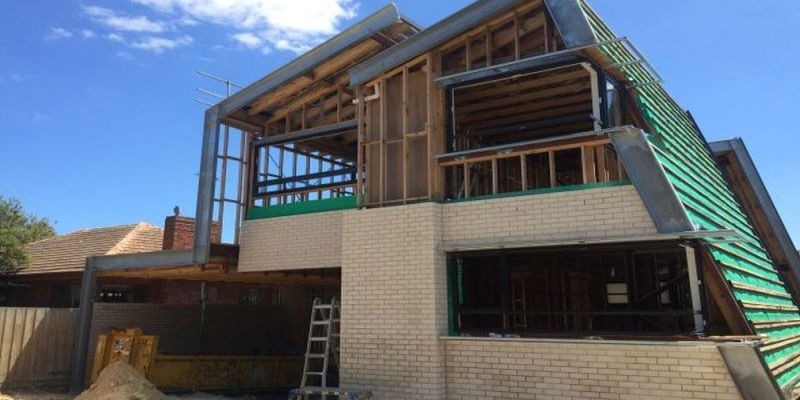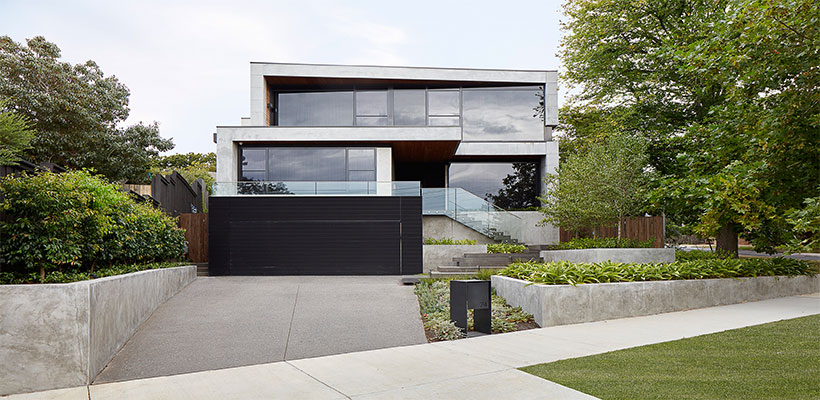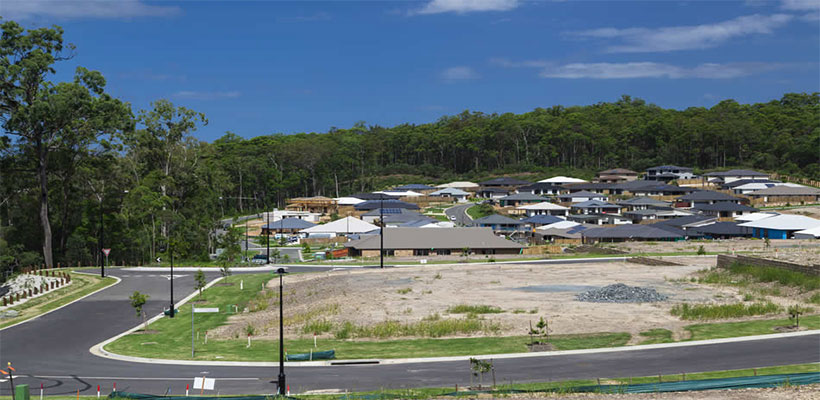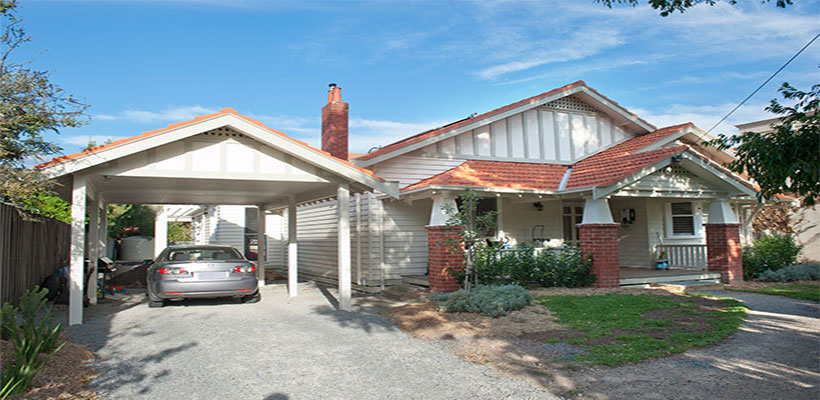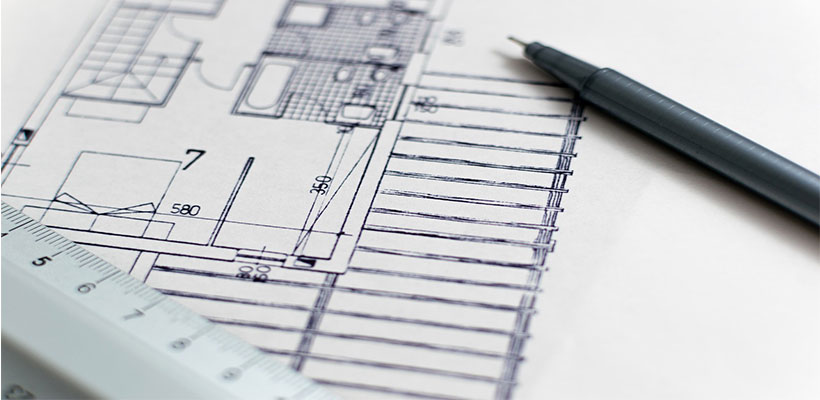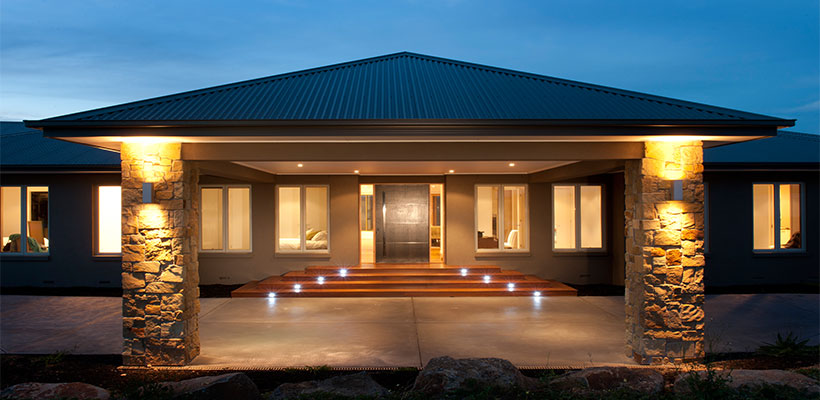Many homeowners in the Melbourne area love the location of their home. The neighbours are great, the schools are ideal, and you’re the perfect distance from friends and family. There’s just one thing missing from the equation: your ideal home.
Sure, you couldn’t ask for a better neighbourhood, but you aren’t exactly living in the home of your dreams. Or maybe you would be okay with a new location, but just don’t want to go through all the hassle of selling, buying, and moving. There are two typical approaches to solve your dilemma: renovate your existing home or knock it down and rebuild from scratch.
Both options have their fair share of pros and cons, and at Interline Constructions, we have years of experience working with homeowners on either side of the fence. We know why some people choose one over the other, and we know all the ins and outs of the cost, process, time-frame, and more. In this guide we’ll take a close look at knock down rebuild vs. renovation so that you can make an informed decision with your best interests in mind.
Council Rules and Planning
Before you get too far down the rabbit hole of comparing all the variables, you should first determine whether you are actually allowed to knock down your house. It would be a shame to waste a lot of time doing all of this research only to find out that this option isn’t even on the table.
Specifically, certain council planning laws in your region may place limits on the extent of renovations that are allowed. And they may prohibit demolition altogether. If your home is particularly old or may hold historical significance, you should definitely check on the regulations before committing to any big master plans. You can learn more about these rules and search a database of protected places at the Heritage Council Victoria.
Cost
If your home is suitable for a knockdown rebuild, the first thing on the mind of most homeowners is the bottom line. So let’s examine what the typical cost of renovating is compared to custom home building from scratch.
While prices are obviously going to fluctuate depending on the extent of your needs, a good guideline for the average cost of a production home is about $250,000 for a 2-storey house and the average cost of a custom home in Melbourne is $750,000 to over $1 million. Renovations are a little harder to estimate because they can vary so widely based on what your project entails. The best approach, if you are trying to decide whether to renovate or rebuild, is to work with a design and build firm to get a quote or two for renovations. If the renovations are more than half the price of a rebuild, it may make more financial sense to just knock everything down and start from scratch.
A rebuild can be a financially sounder choice especially if you’ve got an older home. A brand new home will be built to modern energy efficiency standards, so you could end up saving a lot in the long run. Some modern home rebuilds lead to as much as a 40% decrease in water usage, for example. Likewise, new homes are cheaper to maintain. When you opt for knockdown rebuild, every bit of your home will be brand new. With a renovation, you’ll still have to worry about the existing wear on the parts of your home that aren’t being replaced.
Condition of Your Existing Home
Going hand in hand with the question of renovate or rebuild cost is the current condition of your house. Obviously, the more deteriorated and worn down your home currently is, the more renovations are going to cost. Likewise, if the very structure of your house doesn’t fit the home of your dreams, trying to remodel it into shape may be like trying to fit a square peg through a round hole. It could be that the extent of restructuring that needs to be implemented just makes a renovation unrealistically expensive compared to a knockdown rebuild.
Here are a few factors regarding the condition of your home when it comes to deciding whether you want to renovate or rebuild:
How much space are you changing?
If it is just a room or two that needs to be restructured, along with an addition off the kitchen, you probably don’t need a complete knockdown. If, however, you are going to be making so many renovations that your house is practically being transformed into something new—why not just go ahead and start from scratch in the first place?
Is your house orientated for the sun?
Modern residential design aims to make the best possible use of sunlight to improve both function and energy efficiency. Older homes, however, may have been constructed without this best practice in mind. Your home might be facing in a completely unworkable direction for accessing the sun. Especially if you are on a small footprint without room to expand, rebuilding could be a much simpler process than renovating, especially if you are planning on getting solar panels installed in the long run.
Do you have termite damage?
If you have termite damage of any sort, some repair is obviously in order. If your support beams are suffering termite damage, for example, you are going to have to tear them out and replace them. But if the damage is significant and widespread throughout large portions of the home, a total knockdown and rebuild is the best solution. You don’t just get to start with a clean slate, you have peace of mind knowing that the problem has been completely eliminated.
Will your foundation support another floor?
If you don’t have the square meterage to extend outward, your only chance to expand your living space is to build up. Sometimes, however, your existing foundation won’t be strong enough to safely support a second storey. While there is the possibility of constructing a self-supporting second floor, the better route may be a knockdown rebuild that includes reconstructing the foundation to allow for a taller home.
Return on Investment
Generally speaking, you are considering a knockdown rebuild because you plan to stay in your current location long term. Maybe forever. If, however, you do plan to sell anytime in the near future, you want to ensure that you are getting a good return on your investment. If you spend $900,000 on modifying your home but it will only sell for $750,000 then you obviously have to weigh the benefits and costs of that decision.
Here are some factors to keep in mind when considering your return on investment:
Total renovation costs
First, you need to know what your total house renovation cost is going to be. This is the baseline from which you will make your decision based on several other factors. You want to compare the cost to renovate versus the cost to rebuild in order to determine which is financially feasible.
New market value
Your return on investment is going to be calculated with a pretty simple formula: new market value minus original market value minus renovation costs. You want to calculate your returns based on both the renovation option and the rebuild option.
Here is an example to make that a bit clearer. Imagine the current market value of your home is $900,000. If spending $500,000 on renovations would boost the market value to $1,450,000 then your total return on investment is $50,000.
If you instead spend $900,000 on a complete rebuild and it increases the sale value to $2,150,000 then the return on investment is $350,000. Rebuilds like this are common when your home is located in a very expensive neighbourhood. The market value of the home is boosted due to location, so you can get a much better return on your investment.
Market conditions
Of course, it’s not always easy to get an exact calculation of what your home will be worth. That’s why you have to keep in mind the real estate market in your area, as well as trends over time. If you don’t plan on selling for twenty years, for example, then it could be very hard to predict what your home’s value will be down the road. Your best bet is to work with a knowledgeable real estate agent who can help you make an informed decision based on past experiences in the area.
Other homes in the neighbourhood
Something that you don’t want to do is make your house the odd man out in the neighbourhood. If your home is significantly more expensive than the others nearby, then you may have a hard time finding a buyer. Generally speaking, most people buying into a particular neighbourhood pay within a particular range. A home that’s $500,000 outside of this range is not going to attract offers as quickly. You may end up needing to reduce your asking price to the point that you aren’t earning back what you put into the home.
Time-frame
Although it might not be a strong deciding factor in whether you choose to renovate or rebuild, you probably should have an idea on the total time-frame. Knocking down and rebuilding from scratch can take anywhere from 6 to 18 months. Renovations can vary wildly, of course, based on the extent of changes. But a complete renovation of an entire house will usually take between 6 to 8 months.
Whatever option you choose, you aren’t looking at an overnight process, so be prepared for a long term project, especially if you want it done properly by a reputable company
Renovation Pitfalls and Risks
Many homeowners opt for a complete rebuild for the same reason that people buy a new car: peace of mind. Even the most complete home renovation is going to have its share of risks compared to a new custom home build. You are working with old materials, after all, so you’ll have to deal with all the quirks that come with them.
Here are some of the most common pitfalls to keep in mind when it comes to renovating.
Working with an outdated design
For starters, when you choose to renovate your home instead of rebuilding it, you are stuck with the the original architecture to some extent, for better or worse. While you can work around this, it isn’t always easy. If your home was built decades ago, then it is likely based on outdated design principles that don’t meet the needs of modern families and may also attract less buyers if you are planning on selling it once finished. You may be stuck with small rooms and crowded hallways when what you really want is more open space.
Fear of the unknown
Rebuilding a custom home is often easier because you are starting from a clean slate. There are no unknown variables. When you choose to renovate, things are a little less predictable and you might end up having to spend more than planned as things don’t always fall in place. While pre-construction inspections will provide a good deal of insight on the project, there is always the chance that hidden problems will pop up. This means that your costs may end up higher than you originally budgeted for.
Problems with infrastructure
Depending on the age of your house, there could be serious issues with the plumbing and electrical work. They’ll have to be taken care of during renovation to protect the longevity of your home and for the safety of your family. Likewise, structural damage can be very difficult to completely account for during renovations. If it isn’t handled properly, you could find your walls beginning to crack in a few years, which generally isn’t going to be a risk you run with brand new construction.
Too many renovations
If your house has been around for a while and seen many owners in its life, odds are that it’s been renovated in the past. Some homes, though, see renovation on top of renovation on top of renovation. If these weren’t handled by professionals and didn’t do much to take into account the existing structure of the home, you could be living in a Frankenstein of a house. Renovating it even further could be a lot trickier since there may be past damage that needs to be undone therefore building it from scratch is the best way to go.
Extra hassle
In the end, a renovation is just more complicated than a rebuild. You’re trying to merge the old with the new, which means there are a lot more decisions to be made. If you are looking for a simpler process, a rebuild may be better for you. Once you’ve worked with a designer to work out all of the plans, there is very little else you need to do other than wait for your brand new custom home to be built.
Reasons You May Want to Renovate Instead
Just because there are more variables in a renovation, that doesn’t mean it’s always a bad choice. Some homeowners will be happier with a complete home renovation over a rebuild. Here are some of the reasons why. If many of them resonate with you, a knockdown rebuild might not be what you’re really looking for.
You have an emotional attachment to your home
Some people attach their memories to objects or places very strongly. Maybe you have been living in your existing home for decades. Maybe you’ve raised a family there. Whatever the reason, you have a strong emotional attachment to your home, and knocking it down completely might put you off. If so, a home renovation will let you preserve your memories but still update the look, feel, and functionality of your house.
You want to respect the heritage of your home
Some homeowners feel a strong tie to their home’s historical roots. Your house could be a century old, and a half dozen other families were raised within its walls. If you feel like your time there is one more chapter in an age old tale, then renovating allows you to keep your home’s story alive while still modernising it a bit.
You just love older homes
While modern architectural practices and design trends may have made homes much more efficient and ergonomic, there are some old souls who just fall in love with the charm of older styles. The creaks in the floor, the quirky corners, the classic exterior. Renovation allows you to preserve these charming features while still bringing the home into the 21st century.
Renovate or Rebuild? Make the Choice That’s Right For You!
The decision to renovate your home or knock it down and rebuild from scratch isn’t always a clear choice. But one choice is clear: Interline Constructions has the experience and expertise to take care of your home either way. We have been performing home renovations and knockdown rebuilds in Melbourne for years.
If you are thinking of building a custom home but you are not too sure on what is involved, check out this article, which will hopefully give you a better understanding.
Whether you’re ready to get started today or still aren’t sure which is the choice for you, get in touch today. We’ll schedule a free consultation to go over everything and help you make the most informed decision possible.

